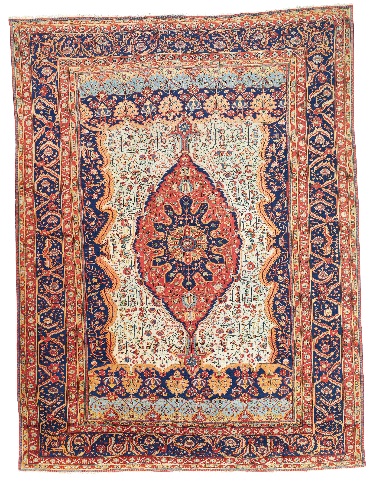Islamic Art Highlights On View At Christie’s Dubai 7-10 October 2019

After the launch of ONLY WATCH earlier this week, the newly refurbished Christie’s Dubai office will be showcasing from 7 to 10 October, 25highlights from the upcoming Islamic and Indian Worlds auction, which will be taking place in London on 24 October. Over the past two years Christie’s London has become the home of the annual Autumn sale of Middle Eastern modern and contemporary art taking place on 23 October and combined they will form the well-established ISLAMIC ART WEEK.
The 25 objects span geographically from India, Iran, Turkey to Egypt, showcasing artistic developments from the 8th to the 19th century. Manuscripts, dagger, tiles, carpets and bejeweled objects will transform the new gallery space for four days into a treasure box.
This substantial group of large Kufic Qur’an leaves comes from the collection of Dr. Mohammed Said Farsi, who was one of the Middle East’s great modern patrons of the visual arts. He supported and encouraged Modern Egyptian Art as well as fostering a love for classical Islamic Art, evidenced by the Qur’ans that are included within this sale. Lot 19 is a large-scale manuscript with elongated kufic lettering throughout and an idiosyncratic arrangement of words. It is exceptional to find a block of this size for sale, which bears its original illuminated frontispiece, late Umayyad or early Abbasid, probably Damascus or Jerusalem, dating from mid-8th century ((estimate: £400,000-600,000).
Bearing a diamond-set tughra of Sultan Abdulhamid II (r.1876-1909) on an engraved medallion, surrounded by diamond-set foliate scrolls, this cigarette case was presented by Sultan Abdulhamid II to rear Admiral Charles H. Baldwin (1822-1888), US commander of the Mediterranean Squadron, in Constantinople in 1882 (estimate: £25,000-35,000).
The two tiles are of the famous ‘cuerda seca’ glaze technique used in the 17th century in Iran. These tiles would have been originally set within a larger panel, composing an overall pictorial scene. Such panels, often situated in arch spandrels, frequently depicted episodes of courtly leisure set within luxuriant gardens. Each tile within the overall scheme would commonly bear a motif or element, as can be seen in the present examples, showcasing a floral sprays amidst swaying foliage. Also, characteristic is the palette of brilliant blue and chrome yellow with detailing in black (estimate: £5,000-7,000).
The master weaver, Hajji Mollah Mohammed Hassan Mohtasham is regarded as one of a very small number of master weavers who successfully re-established Kashan as an important weaving centre in Persia at the end of the 19th century. The carpets produced in his atelier are identified by their masterful weaving, together with the use of the very finest materials such as the wonderfully soft, hand-spun kurk wool, the rich naturally dyed colour palette and the occasional use of purple silk highlights, all of which can be seen on this carpet, measuring 303 x 230cm, dating from circa 1890 (estimate: £10,000-15,000).



